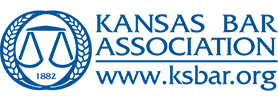At Devkota Law, we believe in empowering our clients and community with important legal information related to personal injury, particularly auto accidents. The first step towards empowerment is understanding what a safe place means in the context of a car accident. This concept is crucial for everyone’s safety and can significantly impact the outcome of potential legal cases.
Our Tri-fold Brochure: 8 Things to Do After a Car Accident
To further our mission of client empowerment, we have developed a comprehensive tri-fold brochure entitled “8 Things to Do After a Car Accident.” This essential guide aims to provide you with immediate steps to take following an accident.
The tri-fold is designed to be kept in your glove box, readily available for quick reference when you need it most. The first point in our guide is understanding and ensuring a safe place following an accident.
Point One – Safe Place
Initiating our journey through the eight crucial steps to take after a car accident, we begin with the concept of a safe place. It’s essential to recognize your immediate situation and prioritize safety.
Recognizing Your Current Situation
The shock and stress following a car accident can cloud your judgment. Recognizing that you’re now part of an accident scene is the first step. This recognition is crucial for taking the right actions, beginning with determining whether you are in a safe place.
First Consideration
Upon realizing you’ve been in an accident, your first consideration should be your immediate safety. Assess your surroundings. Are you on a busy highway with cars zooming by? Or are you in a location where you can safely handle the next steps following the accident? Your safety and that of others should be your primary concern.
Risk of Not Seeking a Safe Place
The risk of not seeking a safe place can lead to further accidents or injuries. Ensuring safety means not just for you, but for all parties involved and other road users. Ignoring this can lead to catastrophic consequences.
Ideal Actions in a Safe Place Scenario
If you can safely move your vehicle without causing further harm, do so. This could mean pulling over to the side, or moving into a nearby parking lot. The aim is to create a safe place where you can then proceed with other necessary steps.
If Moving to a Safe Place Isn’t Possible
There may be situations where moving your vehicle isn’t an option. Here’s what to do in those instances.
When Your Vehicle is Disabled
If your vehicle is immobile, signal its presence to other road users. Use your hazard lights, raise your hood, or take other necessary actions to alert passing motorists of the obstruction.
Managing Evidence at the Accident Scene
Even if your vehicle can’t be moved, try to preserve evidence of the accident. This could involve taking photographs or documenting the scene as much as possible while ensuring safety.
Safety and Evidence Preservation
When an accident occurs, you need to find a balance between ensuring safety and preserving evidence. Both are crucial but require good judgment to handle effectively.
Importance of the Car’s Resting Position
The resting position of the vehicles involved is a crucial piece of evidence. It can shed light on the accident’s dynamics, thus being highly valuable for any ensuing legal proceedings.
Making the Right Decision
While evidence is critical, your safety and that of others takes precedence. If you can preserve evidence without compromising safety, do so. If not, prioritize finding a safe place.
How to Act Safely and Preserve Necessary Evidence
Try to quickly document the scene before moving the vehicles, if safe to do so. However, your primary goal should always be to ensure safety by creating or moving to a safe place.
Conclusion: Concept of Safe Place
The first step after a car accident should always be to ensure the safety of all parties involved. The importance of this action cannot be overstated – it can prevent further harm, create a conducive environment to deal with the aftermath, and even save lives.
If you have any questions about personal injury cases, motor vehicle accidents, and other legal matters, feel free to reach out to us. We’re here to help you navigate these challenging circumstances and ensure you get the representation you deserve.






















